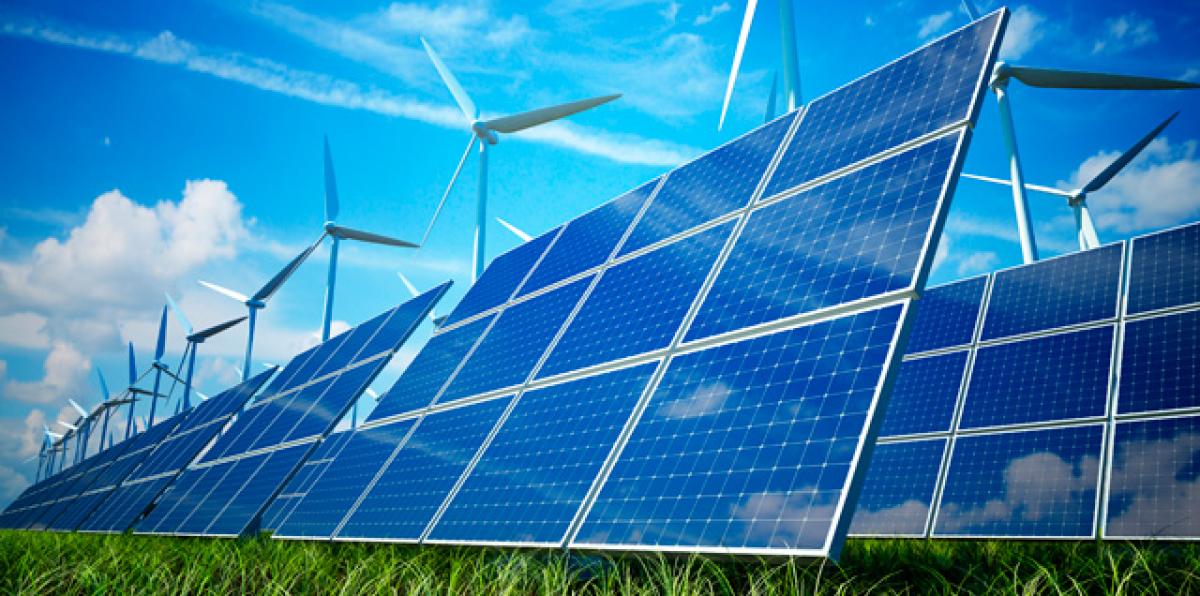Power grid integration needs to quicken

When the sun shines brightly, it\'s manna from heaven for a solar producer. But for an electricity distributor, the surge in the power lines can be a nightmare. This unpredictability of solar and wind energy has long been a technical challenge that requires adroit balancing of the power grid. India is now on the threshold of attaining this balance.
RENEWABLES MAKEOVER
When the sun shines brightly, it's manna from heaven for a solar producer. But for an electricity distributor, the surge in the power lines can be a nightmare. This unpredictability of solar and wind energy has long been a technical challenge that requires adroit balancing of the power grid.
India is now on the threshold of attaining this balance.
The new ‘Greening the Grid’ report, prepared by Energy Ministry and the US Agency for International Development (USAID), has confirmed the technical and economic viability of integrating 175 GW of renewable energy into the country's power grid by 2022, and identifies future course of actions that are favourable for such integration.
The growth in India's renewable energy sector accelerated sharply after the government in 2015 announced an ambitious target of adding 100 GW of solar and 60 GW of wind capacity by 2022, with biogas and other clean energy sources adding another 15 GW. As a result, from July 2015 to December 2016, developers have snapped up contracts to set up 15.9 GW of solar projects.
The wind power sector shifted into a higher gear as well, aiming to build wind farms and installations to add at least 6 GW of capacity every year for the next five years. In terms of installed wind power, India ranks fourth in the world with windmills capable of producing 32 GW of electricity as of March 2017, according the India Wind Turbine Manufacturers Association (IWTMA).
The target set by the government is achievable, "given the technology and manufacturing capability by OEMs (original equipment manufacturers), investment climate for independent power producers and lead taken by the Union government and 'wind states' to promote wind power by favourable policies, and with financial institutions and banks playing an active role," IWTMA Secretary General D.V. Giri said on Global Wind Day.
Power system balancing with 100 GW of solar and 60 GW of wind is achievable with minimal integration challenges, bringing benefits of reduced fuel consumption and emissions, the new report says. This renewable energy capacity would generate 370 terawatt hours (TWh) every year, which is 22 per cent of total electricity consumption in India.
"Fuel requirements for coal and gas fall 20 and 32 per cent, respectively, and CO2 emissions fall 21 per cent (280 million tonnes) in 100S-60W (100 GW solar and 60 GW wind) compared to a No New Renewable Energy scenario," the report said. "As a result, plant load factors for coal drop from 63 to 50 per cent with nearly 20 GW that is never economical to start."
"It is time for the people to get ready and embrace the change with a new mind-set of a new grid for a new India, which is ready to integrate large amount of renewable energy," Energy Minister Piyush Goyal said at the release of the report.
"The overarching conclusion from this study is that integrating 160 GW of renewable energy... is achievable based on projected power system plans and regulations," the Greening the Grid report predicts. "Integrating this level of renewable energy offers benefits of fuel savings and reduced emissions, while still fully meeting projected demand for electricity."
The report has recommended a slew of planning and policy actions that will boost the integration scenario. There has been considerable progress in some -- such as coordinating generation and transmission at the state level to ensure sufficient in-state transmission. The study has suggested creating and maintaining a nationwide model that helps optimise generation and transmission buildouts, which can then be used to inform investment decisions and renewable energy policies.
There is also a need to establish comprehensive regulations at central and state levels regarding flexibility of conventional generators, including minimum generation levels, ramp rates and minimum up and down times. Technical support from the government will help.
"Equip all states with latest and state-of-the-art load forecasting facilities. In addition, equip renewable energy-rich states with state-of-the-art renewable energy forecasting tools," the report suggests. "Further, build capacity of all system operators in this regard so that in-house capability is developed to create and customise such tools in the future."
These issues are expected to discussed in detail at the international conference on large-scale grid integration of renewable energy that is scheduled to be held at New Delhi from September 6 to 8, organised by USAID and Germany's international development agency GIZ. (In arrangement with indiaclimatedialogue.net)
By Soumya Sarkar

















